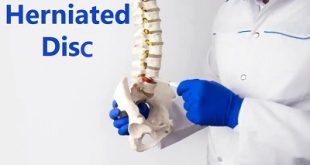What is Hydronephrosis?
Hydronephrosis is the swelling of a kidney due to a build-up of urine. It happens when urine cannot drain out from the kidney to the bladder from a blockage or obstruction. Hydronephrosis can occur in one or both kidneys.
The main function of the urinary tract is to remove wastes and fluid from the body. The urinary tract has four parts: the kidneys, the ureters, the bladder and urethra. The urine is formed when the kidneys filter blood and remove excess waste materials and fluid. Urine collects into a part of the kidney called the renal pelvis. From the renal pelvis, the urine travels down a narrow tube called the ureter into the bladder. The bladder slowly fills up with urine, which empties from the body through another small tube called the urethra. Hydronephrosis occurs when there is either a blockage of the outflow of urine, or reverse flow of urine already in the bladder (called reflux) that can cause the renal pelvis to become enlarged.
Pathophysiology
Hydronephrosis can result from anatomic or functional processes interrupting the flow of urine. This interruption can occur anywhere along the urinary tract from the kidneys to the urethral meatus. The rise in ureteral pressure leads to marked changes in glomerular filtration, tubular function, and renal blood flow. The glomerular filtration rate (GFR) declines significantly within hours following acute obstruction. This significant decline of GFR can persist for weeks after relief of obstruction. In addition, renal tubular ability to transport sodium, potassium, and protons and concentrate and to dilute the urine is severely impaired.
The extent and persistence of these functional insults is directly related to the duration and extent of the obstruction. Brief disruptions are limited to reversible functional disturbance with little associated anatomic changes. More chronic disruptions lead to profound tubular atrophy and permanent nephron loss.
Increased ureteral pressure also results in pyelovenous and pyelolymphatic backflow. Gross changes within the urinary tract similarly depend on the duration, degree, and level of obstruction. Within the intrarenal collecting system, the degree of dilation is limited by surrounding renal parenchyma. However, the extrarenal components can dilate to the point of tortuosity.
To distinguish acute and chronic hydronephrosis, one may consider acute as hydronephrosis that, when corrected, allows full recovery of renal function. Conversely, in chronic hydronephrosis the loss of function is irreversible even with correction of the obstruction. Early experiments with dogs showed that if acute unilateral obstruction is corrected within 2 weeks, full recovery of renal function is possible. However, after 6 weeks of obstruction, function is irreversibly lost.
Grossly, an acutely hydronephrotic system can be associated with little anatomic disturbance to renal parenchyma. On the other hand, a chronically dilated system may be associated with compression of the papillae, thinning of the parenchyma around the calyces, and coalescence of the septa between calyces. Eventually, cortical atrophy progresses to the point at which only a thin rim of parenchyma is present. Microscopic changes consist of dilation of the tubular lumen and flattening of the tubular epithelium. Fibrotic changes and increased collagen deposition are observed in the peritubular interstitium
What are the causes of Hydronephrosis?
Hydronephrosis is not a primarily caused disease. Instead, it is caused by internal or external conditions that affect the urinary collecting system. Another disease may be the underlying cause of hydronephrosis.
The most common cause for this blockage is kidney stones. Blood clots can also sabotage the flow of urine. The core reason for the problem is the sudden development of obstruction or blockage in any one of the ureters.
The ureters are the tubes that connect the kidneys to the bladder. Blocked urine goes back to the kidney, resulting in the swelling of the kidney. This backward flow of urine to the kidney is called vesicoureteral reflux.
Some of the other causes include:
- Enlarged prostate glands
- Pregnancy causes compression due to a growing fetus
- Tumors near the ureter
- Injuries and
- Birth defects
Risk Factors
Learn about risk factors for hydronephrosis.
To date, there are no known risk factors for hydronephrosis. However, boys are four-to-five times more likely to be born with hydronephrosis than girls. Hydronephrosis does not run in families, although some causes of hydronephrosis, such as VUR, may run in families. Hydronephrosis is not linked to anything parents did or did not do during pregnancy so there is nothing you could have done to cause or prevent hydronephrosis of your child’s kidney(s).
Hydronephrosis may be due to factors such as kidney stones, blood clots, tissue outgrowths (polyps) or other abnormalities. Typically treatment of these issues results in a normal appearing kidney and no hydronephrosis.
What are the symptoms of hydronephrosis?
Most babies with hydronephrosis have no symptoms. Older children may also have no symptoms if they have mild or moderate hydronephrosis, and the condition may disappear on its own.
If your child has moderate to severe hydronephrosis, some symptoms may include:
- Pain in the abdomen
- Pain in the side (flank pain)
- Blood in the urine (hematuria)
A child with hydronephrosis may develop a UTI. Symptoms of a urinary tract infection can include the following:
- Strong urge to use the bathroom
- Painful urination
- Cloudy urine
- Back pain
- Fever
- Vomiting
If your infant has had multiple urinary tract infections (UTIs) with (or without) a fever, it could indicate some kind of obstruction or reflux in the urinary system. However, UTIs can be difficult to spot in infants: In many cases, multiple, unexplained fevers are the only sign.
Older children may have more recognizable symptoms of UTIs, including a strong urge to urinate, painful urination, or cloudy urine. If your child tends to get repeat UTIs, you may want to have him evaluated for possible urinary tract obstruction.
Complications
- The most common complication of hydronephrosis is the development of a urinary tract infection (UTI).
- When the UTI is associated with a high fever, a kidney infection is (pyelonephritis) is suspected. This is caused by bacteria spreading from the bladder to the kidney and invading the kidney tissue.
- Children with severe hydronephrosis (moderate-severe, grade 3 and 4) have a higher risk of UTI/pyelonephritis.
- If pyelonephritis is severe or not treated in a timely manner, or if it affects both kidneys, complications such as permanent kidney damage (kidney scarring) can lead to problems such as high blood pressure and sometimes kidney failure.
How is Hydronephrosis diagnosed?
- Physical examination: Your doctor will ask you about any symptoms you are having and will examine the area near the kidneys and bladder for tenderness or swelling. The doctor may ask about your medical history and your family’s medical history. Your doctor will look for pelvic swelling. Men may need to undergo a rectal exam to determine whether the prostate is enlarged. Women might require a pelvic exam to evaluate whether there are any problems with the uterus or ovaries.
- Urine tests: A urine sample will be collected and analyzed to find out if there is blood, stone crystals or any infection and bacteria present.
- Blood tests: A complete blood count may be performed to determine whether an infection is present. Tests of kidney function including creatinine, estimated GFR (eGFR) and blood urea nitrogen (BUN) may be done.
- Imaging procedures: The main test done is an ultrasound. This does not require radiation. A CT scan or MRI may be necessary.
What are the treatment options for Hydronephrosis?
After considering the nature and cause of the hydronephrosis, doctors will decide between recommending observation or surgery.
Fetal intervention
In very rare instances, prenatal hydronephrosis is so severe that it puts the fetus at risk. This usually means the obstruction is in the child’s urethra, blocking drainage of the bladder and both kidneys. In turn, this results in a dangerously low amount of amniotic fluid (a condition called oligohydramnios).
Observation
If postnatal testing shows your child has mild to moderate hydronephrosis, your doctor may recommend allowing time for the condition to correct itself on its own. Your child may receive a low dose of antibiotics to prevent infection. Repeat ultrasounds will let us check for improvement.
Observation has become the accepted method of treatment in children with mild hydronephrosis. Even in children with moderate hydronephrosis, if kidney function is not lost and kidneys are growing well, observation can allow the condition to correct itself.
Surgery
Only in severe cases would surgery be needed. The goal of the operation is to reduce the swelling and pressure in the kidney by restoring the free flow of urine.
The most common surgical procedure is pyeloplasty. This repairs the most common type of blockage that causes hydronephrosis: ureteropelvic junction obstruction (UPJ). In pyeloplasty, the surgeon will remove the narrowed or obstructed part of the ureter. Then, the healthy portion is reconnected to the kidney’s drainage system. After open surgery (small incision over the kidney), children usually stay in the hospital for about two to three days. They heal in two to three weeks. The success rate is about 95 percent.
Other surgical treatments may be recommended for your child, depending on what’s causing the hydronephrosis and how severe it is. To learn more about these, see: ureteropelvic junction obstruction, vesicoureteral reflux, posterior urethral valves, and ureteroceles.
Robot-assisted and minimally invasive surgery
This innovative tool is used for about half of the pyeloplasties performed by our urological team.
A robot-assisted pyeloplasty is a minimally invasive laparoscopic procedure. With the use of a tiny camera, surgeons operate using very thin instruments inserted into three or four small incisions. Robot-assisted pyeloplasty removes an obstructed section of the ureter and reattaches the healthy portion to the kidney’s drainage system.
Robotic surgery can offer a number of benefits as compared to traditional (open) surgery, including:
- Less discomfort after the operation
- Smaller scars on the belly
- A shorter hospital stay — usually 24 to 48 hours
- Quicker recovery
- Earlier return to full activities
Even if pyeloplasty is recommended for your child, a robot-assisted procedure may or may not be suitable. Your doctor will recommend the best options for your child.
How can I prevent Hydronephrosis?
Since hydronephrosis is caused by an underlying condition, prevention depends on avoiding or promptly treating the cause. For instance, the chance of developing a kidney stone may be reduced by going to a stone clinic to find out what is causing the stones and start treatment to prevent recurrence (repeating).
Seek treatment immediately if you experience severe pain in the side or abdomen, vomiting, or a fever above 100.5 degrees Fahrenheit.
 Diseases Treatments Dictionary This is complete solution to read all diseases treatments Which covers Prevention, Causes, Symptoms, Medical Terms, Drugs, Prescription, Natural Remedies with cures and Treatments. Most of the common diseases were listed in names, split with categories.
Diseases Treatments Dictionary This is complete solution to read all diseases treatments Which covers Prevention, Causes, Symptoms, Medical Terms, Drugs, Prescription, Natural Remedies with cures and Treatments. Most of the common diseases were listed in names, split with categories.







